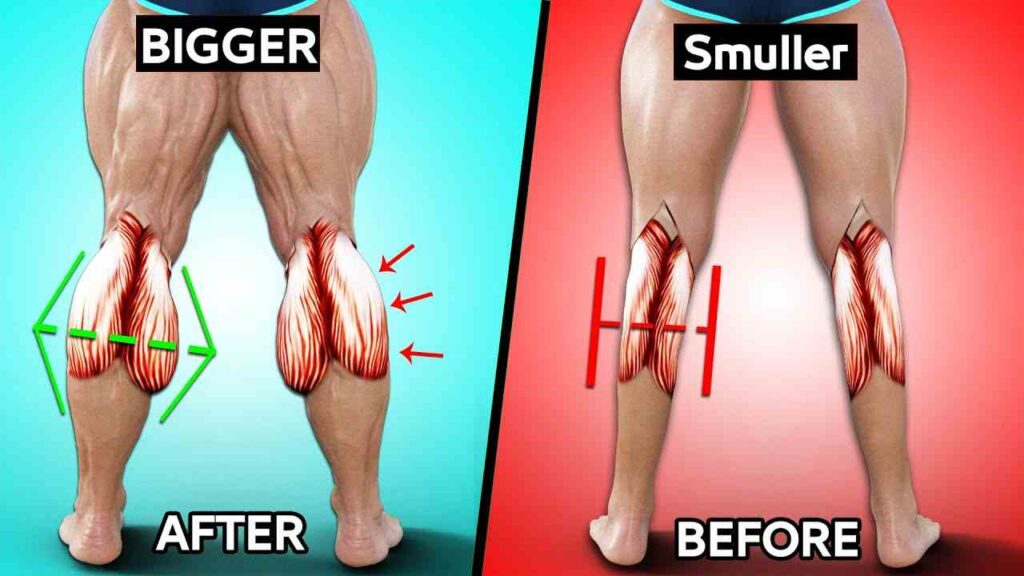When it comes to building strong legs, the hack squat and leg press are two popular exercises that can help you reach your fitness goals. Both exercises target your leg muscles, but they do so in different ways. Choosing between the hack squat and leg press can be confusing, especially if you’re not sure which one is right for you.
In this article, we’ll break down the differences between these two exercises, explain how each one works, and help you decide which is better for your workout routine. Whether you’re a beginner or an experienced lifter, this guide will give you the information you need to make the best choice for your legs.
What is Hack Squat and Leg Press
Hack squats and leg presses are two of the most popular exercises for building strong and muscular legs. Both exercises are staples in many workout routines, but they target your muscles in different ways and offer unique benefits.
1. Hack Squats
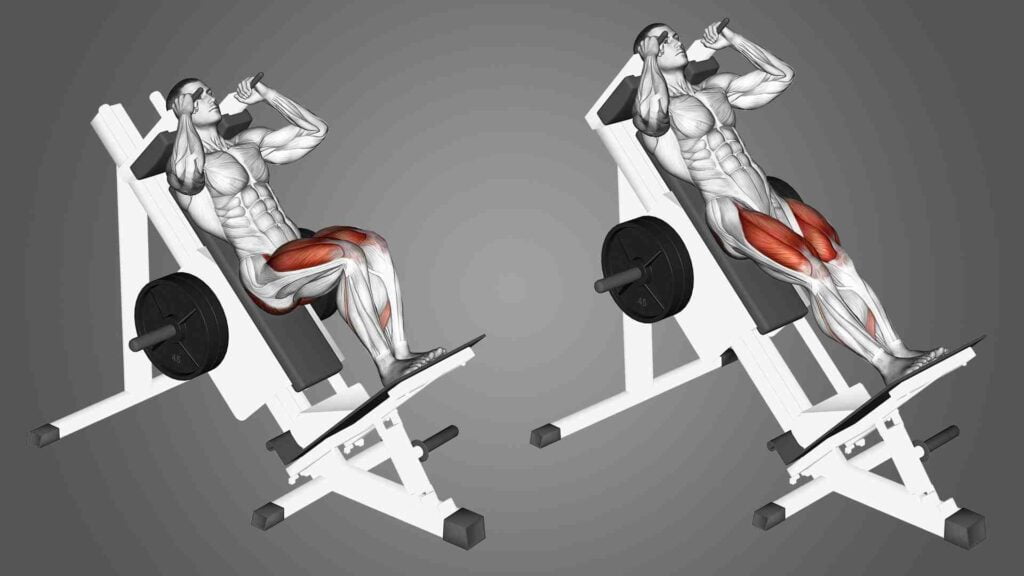
The hack squat is a leg exercise that primarily targets the quadriceps, with the additional engagement of the glutes and hamstrings, performed using a hack squat machine.
How to Perform:
- Position your feet shoulder-width apart on the platform, with your back against the pads.
- Lower your body by bending your knees until your thighs are parallel to the ground.
- Push through your heels to return to the starting position.
Tips for Proper Exercise:
- Place feet shoulder-width apart, toes slightly out.
- Keep your back straight against the pad.
- Lower slowly until the thighs are parallel to the platform.
- Drive through your heels to rise back up.
- Keep a slight bend in your knees at the top.
2. Leg Presses
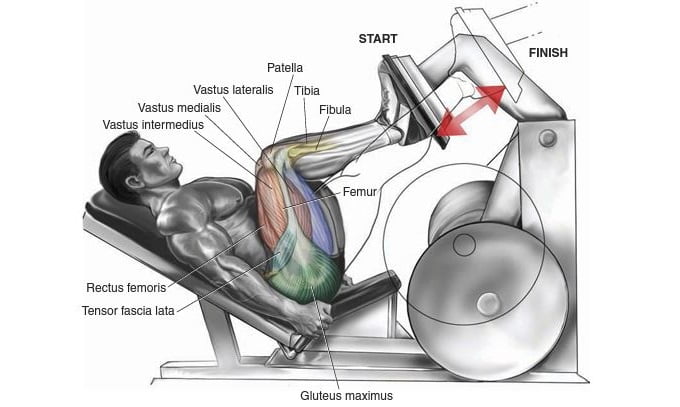
The leg press is a compound exercise that targets the quadriceps, glutes, and hamstrings, performed using a leg press machine.
How to Perform:
- Sit on the leg press machine with your back and head against the padded support.
- Place your feet shoulder-width apart on the platform.
- Push the platform away by extending your legs, then slowly return to the starting position.
Tips for Proper Exercise:
- Ensure knees form a 90-degree angle when feet are on the platform.
- Place feet shoulder-width apart, heels flat.
- Keep lower back and glutes in contact with the seat.
- Lower the platform slowly, avoiding knee collapse.
- Focus on pushing through your heels.
- Keep a slight bend in your knees at the top.
Best Cable Machine Leg Workouts
By following these guidelines, you can perform hack squats and leg presses effectively and safely.
Equipment and Setup
1. Hack Squat Machine
The hack squat machine typically consists of a sled that moves along a set of rails. It has a backrest, shoulder pads, and a footplate. The user stands on the footplate with their back against the backrest and shoulders under the pads.
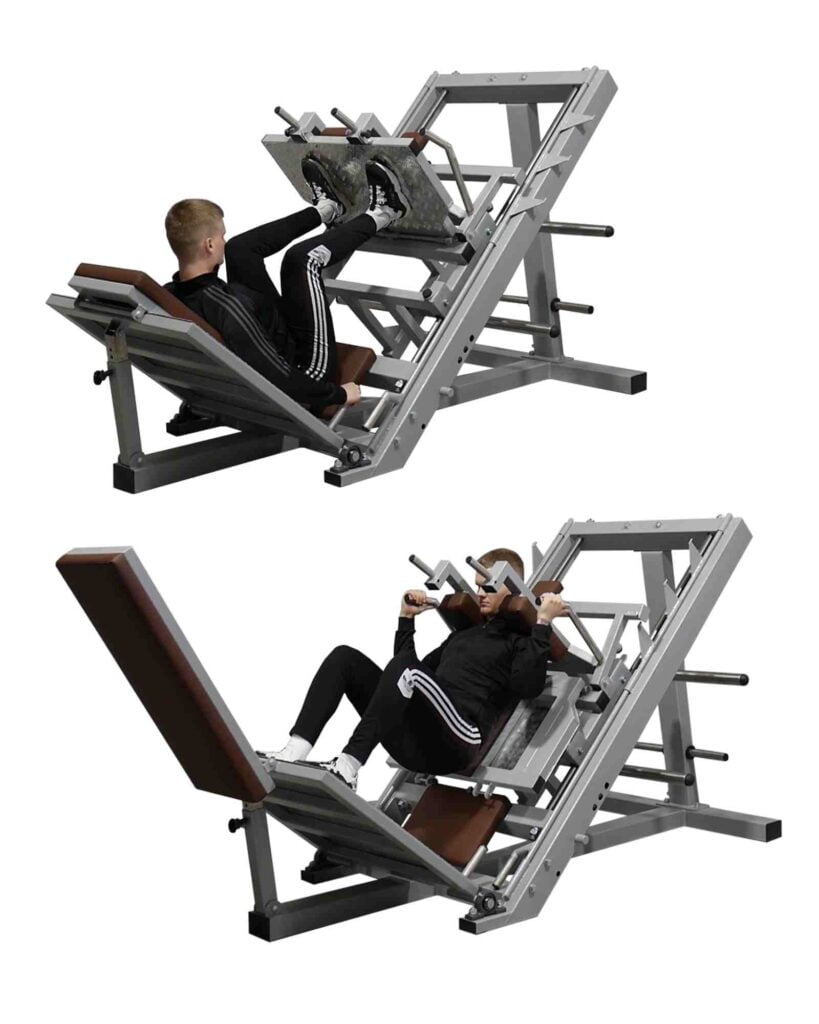
SHOP FOR THE HACK SQUAT MACHINE
Setup and Use:
- Load the Machine: Add the desired weight to the machine.
- Position Yourself: Step onto the platform, place your back against the backrest, and position your shoulders under the shoulder pads.
- Foot Placement: Place your feet shoulder-width apart on the footplate. You can adjust your foot position to target different muscle groups.
- Release the Safety Handles: Push up slightly to release the safety handles.
- Perform the Squat: Lower yourself by bending your knees until they form a 90-degree angle. Keep your back pressed against the pad and your core engaged.
- Return to Start: Push through your heels to return to the starting position.
- Lock the Machine: Once done, re-engage the safety handles to lock the machine in place.
2. Leg Press Machine
The leg press machine consists of a seat and a platform that you push with your legs. There are different types of leg press machines, such as the seated leg press and the 45-degree leg press.
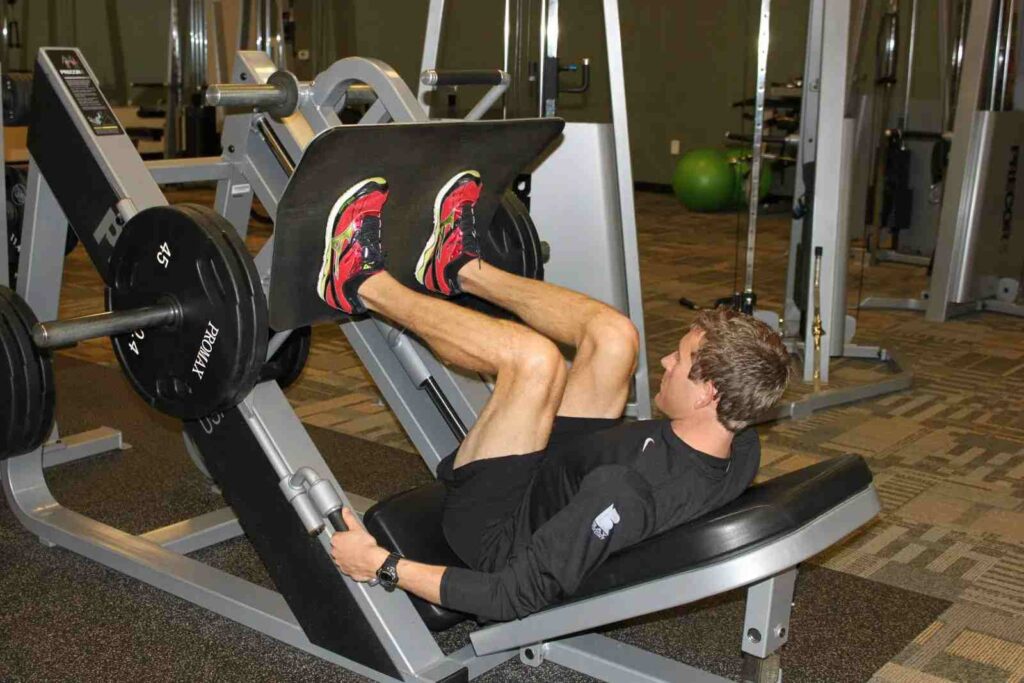
Setup and Use:
- Adjust the Seat: Sit on the machine and adjust the seat so that your legs are at a 90-degree angle when your feet are on the platform.
- Load the Machine: Add the desired weight to the machine.
- Foot Placement: Place your feet shoulder-width apart on the platform. Adjust your foot position to target different muscle groups.
- Grip the Handles: Hold onto the handles to stabilize your upper body.
- Perform the Press: Push the platform away by extending your legs. Avoid locking your knees at the top of the movement.
- Return to Start: Slowly lower the platform back to the starting position, ensuring your knees do not go past a 90-degree angle.
- Repeat: Perform the desired number of repetitions.
SHOP FOR THE LEG PRESS MACHINE
By following these steps, you can safely and effectively use both the hack squat and leg press machines to target your lower body muscles.
Hack Squat vs Leg Press: Which One is Better?
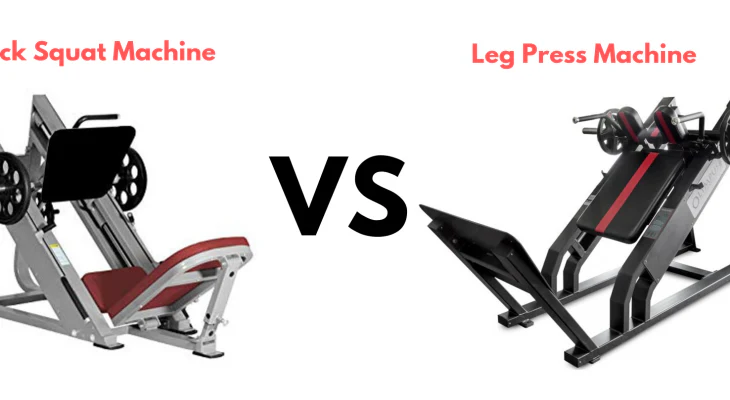
When comparing the hack squat and the leg press, it’s important to consider what your fitness goals are, as both exercises offer distinct benefits. There’s no definitive “better” exercise, but here’s a breakdown to help you decide which one is better suited for your needs:
Hack Squat
Pros:
- More Functional Movement: Hack squats simulate a squatting pattern that is more similar to real-life movements like sitting and standing, making it a functional exercise.
- Core Engagement: Because the body is more upright, hack squats require greater core activation to maintain balance and stability.
- Better for Quad Development: The hack squat places more emphasis on the quads, especially if you keep your feet lower on the platform.
- Greater Range of Motion: Hack squats typically offer a deeper squat, engaging more muscles, particularly in the lower body.
Cons:
- Higher Joint Strain: Hack squats can put more pressure on the knees and lower back due to the upright position.
- Less Comfortable for Beginners: Proper form can be harder to master, which might increase the risk of injury for people new to squats.
Best For:
- Those looking to improve quad strength.
- Individuals aiming for more core engagement.
- Anyone working on functional lower-body strength.
Leg Press
Pros:
- More Control and Isolation: The leg press allows you to focus purely on your legs without worrying about balance or stability, making it easier to isolate the quads, glutes, and hamstrings.
- Safer for Heavy Lifting: The back support reduces strain on your spine and lower back, making it safer for lifting heavy weights.
- Customizable Foot Position: You can easily adjust your foot placement to target different muscle groups (e.g., placing feet higher targets the hamstrings and glutes, while a lower placement hits the quads more).
Cons:
- Less Functional: While great for muscle isolation, the leg press doesn’t mimic real-life movements as closely as the hack squat.
- Less Core Involvement: The leg press doesn’t require much core stabilization, which can be a downside if you’re aiming to strengthen your core along with your legs.
Best For:
- People recovering from injuries or those with lower back issues.
- Those looking to lift heavy weights with less risk to the joints.
- Lifters who want to isolate leg muscles and focus purely on strength and muscle building.
Which is Better?
- For Strength and Power: If you’re focusing on strength and muscle mass, both exercises are excellent, but the leg press might allow you to lift heavier weights safely, especially for beginners or those with back issues.
- For Functional Training: If you want to mimic natural movements and build functional lower body strength, the hack squat is likely the better choice.
- For Beginners: The leg press is usually easier for beginners to learn because it doesn’t require as much core engagement or balance.
- For Injury Prevention: If you have knee or back issues, the leg press may be safer, as it offers back support and you can control the range of motion.
SHOP FOR THE FITNESS TRACKER ON AMAZON
Alternative Exercises for Hack Squats and Leg Presses
1. Front Squats
- Muscles Targeted: Similar to hack squats, front squats target the quadriceps, glutes, and hamstrings.
- How to Perform: Hold a barbell across the front of your shoulders, keep your chest up, and squat down until your thighs are parallel to the ground, then push back up.
2. Goblet Squats
- Muscles Targeted: A great alternative that targets the quads, glutes, and core.
- How to Perform: Hold a dumbbell or kettlebell close to your chest, squat down until your thighs are parallel to the ground, then stand back up.
3. Bulgarian Split Squats
- Muscles Targeted: This exercise targets the quads, glutes, and hamstrings, and also improves balance.
- How to Perform: Place one foot behind you on a bench, lower your body by bending your front knee, then push back up.
4. Sissy Squats
- Muscles Targeted: Focuses intensely on the quadriceps.
- How to Perform: Stand with your feet shoulder-width apart, lean back while bending your knees, and lower your body until your thighs are parallel to the ground, then return to the starting position.
5. Belt Squats
- Muscles Targeted: Targets the quads, glutes, and hamstrings without putting stress on the lower back.
- How to Perform: Use a belt squat machine or attach a weight belt with plates, squat down until your thighs are parallel to the ground, then stand back up.
6. Landmine Squats
- Muscles Targeted: Engages the quads, glutes, and core.
- How to Perform: Hold the end of a barbell anchored in a landmine attachment, squat down until your thighs are parallel to the ground, then push back up.
7. Safety Bar Squats
- Muscles Targeted: Provides a safer alternative to traditional squats, targeting the quads, glutes, and hamstrings.
- How to Perform: Use a safety squat bar, keep your chest up, squat down until your thighs are parallel to the ground, then stand back up.
8. Leg Extensions
- Muscles Targeted: Isolates the quadriceps.
- How to Perform: Sit on a leg extension machine, extend your legs until they are straight, then slowly lower back to the starting position.
Best Resistance Band Bicep Exercises
FAQs
Q 1. Can hack squats and leg presses replace traditional squats?
Ans. While hack squats and leg presses are excellent for targeting the leg muscles, traditional squats engage more muscle groups and improve overall functional strength. It’s beneficial to include all three in your workout routine for balanced development.
Q 2. How often should I do hack squats and leg presses?
Ans. It depends on your fitness goals and overall workout plan. Generally, incorporating these exercises 1-2 times per week is effective for most people. Ensure you allow adequate recovery time between sessions.
Q 3. Are hack squats and leg presses suitable for beginners?
Ans. Yes, both exercises can be suitable for beginners. However, it’s important to start with lighter weights and focus on proper form to avoid injury.
Q 4. How do hack squats and leg presses affect knee health?
Ans. Both exercises can strengthen the muscles around the knee, potentially improving knee stability. However, improper form or excessive weight can lead to knee strain.
Q 5. What are some common variations of hack squats and leg presses?
Ans. Variations include single-leg hack squats, reverse hack squats, narrow stance leg presses, and wide stance leg presses. These variations can target different muscle groups and add variety to your workouts.
Q 6. How do I choose the right weight for hack squats and leg presses?
Ans. Start with a weight that allows you to perform 8-12 repetitions with good form. Gradually increase the weight as you become more comfortable and stronger. It’s important to challenge yourself without compromising form.
Conclusion
Both hack squats and leg presses are excellent exercises for building strong and muscular legs. Each has its unique benefits and can be used to target different muscle groups effectively. Hack squats are great for engaging your core and improving knee stability, while leg presses allow you to lift heavier weights safely and are easier for beginners.
By understanding the differences and learning how to perform each exercise correctly, you can choose the one that best fits your fitness goals. Remember to mix things up and try alternative exercises to keep your workouts interesting and challenging.

Good day, and welcome to Fitthour. My name is Shubham Vijay, and I am a certified personal trainer and nutrition coach with 6 years of experience in the fitness industry. At Fitthour, we specialize in types of training, such as strength training, cardio, or HIIT, and our mission is to help clients achieve their fitness goals and improve their overall health.

